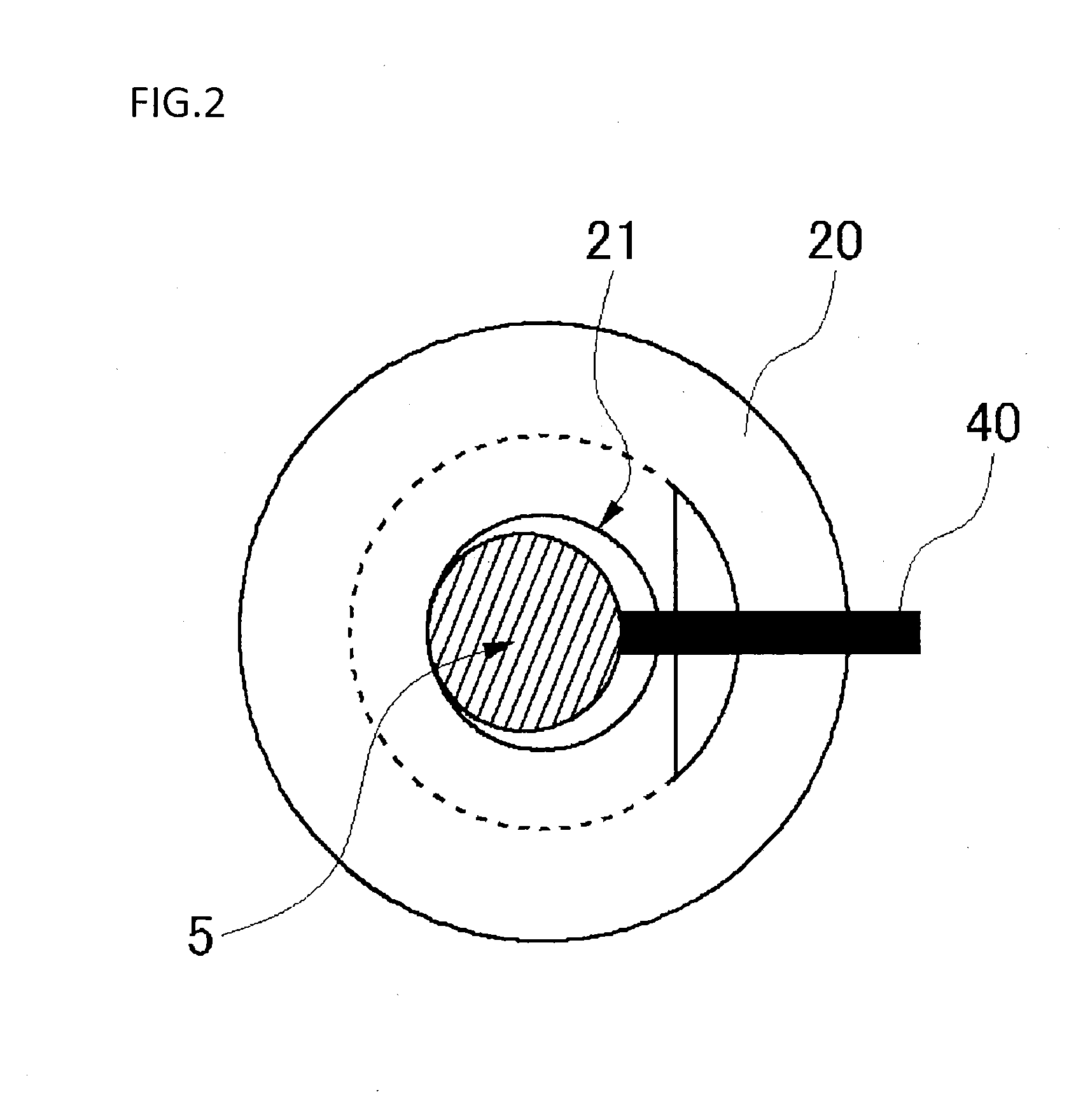Silicon core wire holder and polycrystalline silicon manufacturing method
- Summary
- Abstract
- Description
- Claims
- Application Information
AI Technical Summary
Benefits of technology
Problems solved by technology
Method used
Image
Examples
example 1
[0110]The core wire holder 20 made of graphite with the upper end side formed into a truncated cone shape was used. The insert hole 30 for a 4 mm screw is formed, in the slope surface of the truncated cone shape at a position 10 mm away from the opening part 22 of the core wire insert hole 21, so as to extend toward the core wire insert hole 21, and the slit 60 is provided in a longitudinal direction in the opening part 22.
[0111]In addition, the silicon core wire 5 was used, in which the through-hole 32 is opened such that, when the silicon core wire 5 is inserted to the bottom of the core wire insert hole 21, the bolt 31a, which is the common fixing shaft, passes through the insert hole 30 of the core wire holder and the through-hole 32 of the silicon core wire 5.
[0112]Further, the conductive sheet 61 having a specific resistance equivalent to that of the core wire holder 20 is inserted between contact surfaces of an inner surface of the core wire insert hole 21 and the silicon cor...
example 2
[0115]The core wire holder 20 made of graphite which is the same type as in Example 1 was used. Trichlorosilane gas along with hydrogen gas was supplied as a source gas while the silicon core wire 5 held in the core wire holder 20 was being heated to 1050° C. In a 12-hour period of growth rate inhibition after the start of vapor phase growth, a first end side of the core wire holder 20 was covered uniformly by deposition of the polycrystalline silicon 6. At that time, the diameter of the polycrystalline silicon 6 was 13 mm and the current value was 195 A. From this point, the supply gas amount started to be increased, and then, the current value was increased with the growth in the diameter of the polycrystalline silicon rod. In 62 hours, polycrystalline silicon having a diameter of 119 mm was obtained.
PUM
 Login to View More
Login to View More Abstract
Description
Claims
Application Information
 Login to View More
Login to View More - R&D
- Intellectual Property
- Life Sciences
- Materials
- Tech Scout
- Unparalleled Data Quality
- Higher Quality Content
- 60% Fewer Hallucinations
Browse by: Latest US Patents, China's latest patents, Technical Efficacy Thesaurus, Application Domain, Technology Topic, Popular Technical Reports.
© 2025 PatSnap. All rights reserved.Legal|Privacy policy|Modern Slavery Act Transparency Statement|Sitemap|About US| Contact US: help@patsnap.com



